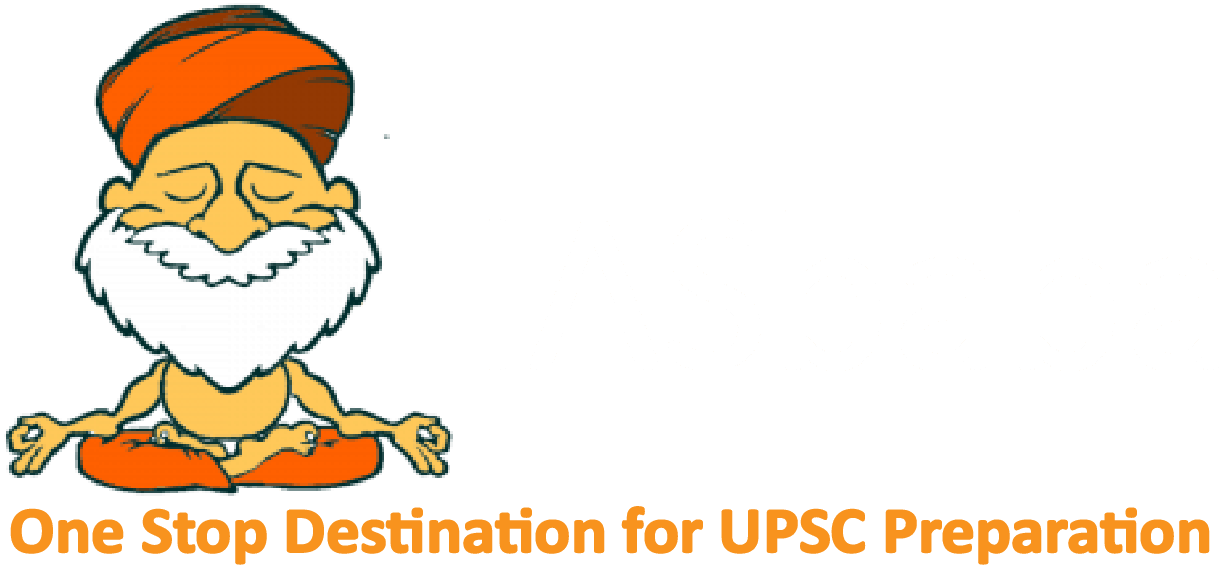For Previous Static Quiz (ARCHIVES) – CLICK HERE
DAILY STATIC QUIZ will cover all the topics of Static/Core subjects – Polity, History, Geography, Economics, Environment and Science and technology.
This is a part of our recently launched, NEW INITIATIVE IASbaba’s INTEGRATED REVISION PLAN (IRP) 2020 – Road Map for the next 100 Days! FREE INITIATIVE!
We will make sure, in the next 4 months not a single day is wasted. All your energies are channelized in the right direction. Trust us! This will make a huge difference in your results this time, provided that you follow this plan sincerely every day without fail.
Gear up and Make the Best Use of this initiative.
Do remember that, “the difference between Ordinary and EXTRA-Ordinary is PRACTICE!!”
0 of 10 questions completed
Questions:
To view Solutions, follow these instructions:
You have already completed the test before. Hence you can not start it again.
Test is loading...
You must sign in or sign up to start the test.
You have to finish following test, to start this test:
0 of 10 questions answered correctly
Your time:
Time has elapsed
You have scored 0 points out of 0 points, (0)
Sangam poems mention the muvendar. This is a Tamil word meaning three chiefs, used for the heads of three ruling families. These three ruling families are
Solution (d)
Sangam poems mention the muvendar. This is a Tamil word meaning three chiefs, used for the heads of three ruling families, the Cholas, Cheras, and Pandyas. They became powerful in south India around 2300 years ago.
Each of the three chiefs had two centres of power:
Of these six cities, two were very important: Puhar or Kaveripattinam, the port of the Cholas, and Madurai, the capital of the Pandyas.
Hence option d is correct.
Solution (d)
Sangam poems mention the muvendar. This is a Tamil word meaning three chiefs, used for the heads of three ruling families, the Cholas, Cheras, and Pandyas. They became powerful in south India around 2300 years ago.
Each of the three chiefs had two centres of power:
Of these six cities, two were very important: Puhar or Kaveripattinam, the port of the Cholas, and Madurai, the capital of the Pandyas.
Hence option d is correct.
After Kalinga war, Emperor Ashoka had gave up war for his lifetime and started to execute Dhamma. Ashoka’s Dhamma includes
Solution (d)
After Kalinga war, Emperor Ashoka had gave up war for his lifetime and started to execute Dhamma. Ashoka’s dhamma did not involve worship of a god, or performance of a sacrifice. He felt it is his duty to instruct his subjects through teachings of the Budhha.
He appointed officials, known as the dhammamahamatta who went from place to place teaching people about dhamma.
Besides, Ashoka got his messages inscribed on rocks and pillars, instructing his officials to read his message to those who could not read it themselves.
Hence option d is correct.
Solution (d)
After Kalinga war, Emperor Ashoka had gave up war for his lifetime and started to execute Dhamma. Ashoka’s dhamma did not involve worship of a god, or performance of a sacrifice. He felt it is his duty to instruct his subjects through teachings of the Budhha.
He appointed officials, known as the dhammamahamatta who went from place to place teaching people about dhamma.
Besides, Ashoka got his messages inscribed on rocks and pillars, instructing his officials to read his message to those who could not read it themselves.
Hence option d is correct.
Consider the following statements regarding the Silappadikaram and the Manimekalai
Which of the statements given above is/are correct?
Solution (a)
Silappadikaram was written by Ilango Adigal in the second century A.D.
Manimekalai was written by Buddhist poet Sithalai Sathanar during the 5th century.
Silappadikaram and Manimekalai are called the ‘twin epics’ because they form a continuous story narrating the story of a single family – Kovalan (the rich merchant prince of Puhar),
Kannagi (Kovalan’s chaste wife), Madhavi (the dancer) with whom Kovalan lived in wedlock and Manimekalai, the child of this wedlock.
Hence Statement 1 is correct and 2 is incorrect
Solution (a)
Silappadikaram was written by Ilango Adigal in the second century A.D.
Manimekalai was written by Buddhist poet Sithalai Sathanar during the 5th century.
Silappadikaram and Manimekalai are called the ‘twin epics’ because they form a continuous story narrating the story of a single family – Kovalan (the rich merchant prince of Puhar),
Kannagi (Kovalan’s chaste wife), Madhavi (the dancer) with whom Kovalan lived in wedlock and Manimekalai, the child of this wedlock.
Hence Statement 1 is correct and 2 is incorrect
Consider the following statements
Which of the statements given above is/are correct?
Solution (d)
First Buddhist Council
It was held after the mahaparinirvana of the Buddha. It was help under the patronage of king Ajatashatru with the monk Mahakasyapa presiding at Rajgriha.
Second Buddhist Council
It was held in 386 BC at Vaishali under the patronage of King Kalasoka and the presidency of Sabakami.
Third Buddhist Council
Third Buddhist council was held in 250 BC at Pataliputra under the patronage of King Asoka and under the presidency of Moggaliputta Tissa.
Fourth Buddhist Council
The Fourth Buddhist Council was held at Kundalvana, Kashmir in 72 AD under the patronage of Kushan king Kanishka and the president of this council was Vasumitra, with Aśvaghosa as his deputy. This council distinctly divided the Buddhism into 2 sects Mahayana & Hinayana.
Hence all the statements are correct
Solution (d)
First Buddhist Council
It was held after the mahaparinirvana of the Buddha. It was help under the patronage of king Ajatashatru with the monk Mahakasyapa presiding at Rajgriha.
Second Buddhist Council
It was held in 386 BC at Vaishali under the patronage of King Kalasoka and the presidency of Sabakami.
Third Buddhist Council
Third Buddhist council was held in 250 BC at Pataliputra under the patronage of King Asoka and under the presidency of Moggaliputta Tissa.
Fourth Buddhist Council
The Fourth Buddhist Council was held at Kundalvana, Kashmir in 72 AD under the patronage of Kushan king Kanishka and the president of this council was Vasumitra, with Aśvaghosa as his deputy. This council distinctly divided the Buddhism into 2 sects Mahayana & Hinayana.
Hence all the statements are correct
Consider the following statements regarding Harappan Civilization and their Objects of Worship
Which of the statements given above is/are correct?
Solution (c)
The evidence for the objects of worship comes from the study of Harappan seals and terracotta figurines. Amongst the evidences that come from the seals, the most famous is a deity who has been identified as proto-Siva.
Moreover in some Harappan settlements the phallic emblem of Siva (Lingam) has been found. All these evidences have led scholars to believe that Siva was the most important male god of the Harappans. Perhaps the temples were dedicated to the same god.
Hence Statement 1 is correct.
Mother Goddess
The Harappan settlements have yielded a very large number of terracotta figurines. Among them are the representations of females adorned with a wide girdle, loin cloth and necklaces. They wear a fan-shaped head dress. Sometimes they are shown with an infant. The general notion of fertility is indicated by many representations of pregnancy. These evidences indicate the prevalence of cults of fertility and mother goddess worship.
Hence Statement 2 is incorrect.
The Harappans also seem to have worshipped tree spirits. several seals depict the Pipal tree.
Hence Statement 3 is correct.
A large number of animals also seem to have been worshipped. Again, our information comes from their representation on seals and sealings and in . terracotta.
Hence Statement 4 is incorrect.
Solution (c)
The evidence for the objects of worship comes from the study of Harappan seals and terracotta figurines. Amongst the evidences that come from the seals, the most famous is a deity who has been identified as proto-Siva.
Moreover in some Harappan settlements the phallic emblem of Siva (Lingam) has been found. All these evidences have led scholars to believe that Siva was the most important male god of the Harappans. Perhaps the temples were dedicated to the same god.
Hence Statement 1 is correct.
Mother Goddess
The Harappan settlements have yielded a very large number of terracotta figurines. Among them are the representations of females adorned with a wide girdle, loin cloth and necklaces. They wear a fan-shaped head dress. Sometimes they are shown with an infant. The general notion of fertility is indicated by many representations of pregnancy. These evidences indicate the prevalence of cults of fertility and mother goddess worship.
Hence Statement 2 is incorrect.
The Harappans also seem to have worshipped tree spirits. several seals depict the Pipal tree.
Hence Statement 3 is correct.
A large number of animals also seem to have been worshipped. Again, our information comes from their representation on seals and sealings and in . terracotta.
Hence Statement 4 is incorrect.
Consider the following about HINAYANA:
Which of the statement given above is/are correct?
Solution (a)
Hinayana Buddhism emphasized upon the individual salvation.
Hence statement 1 is correct.
Hinayana Buddhism opposed idolatry and did not worship Buddha in human form.
Hence statement 2 is incorrect.
Solution (a)
Hinayana Buddhism emphasized upon the individual salvation.
Hence statement 1 is correct.
Hinayana Buddhism opposed idolatry and did not worship Buddha in human form.
Hence statement 2 is incorrect.
Which of the statements given below is NOT CORRECT?
Solution (a)
Parsvanatha, the 23rd Tirthankara is considered to be the founder of Jainism.
Hence statement a is incorrect.
Solution (a)
Parsvanatha, the 23rd Tirthankara is considered to be the founder of Jainism.
Hence statement a is incorrect.
Consider the following statements:
Which of the statements given above is/are correct?
Solution (d)
During Asoka’s regime (3rd century BC), Prakrit (not Sanskrit) served as the lingua franca of the country.
Hence statement 1 is incorrect.
Later Sanskrit (not Pali) acquired the same position and served as the state language in the remotest parts of the country. The process became prominent in the Gupta period in the fourth century A.D.
Hence statement 2 is incorrect.
Solution (d)
During Asoka’s regime (3rd century BC), Prakrit (not Sanskrit) served as the lingua franca of the country.
Hence statement 1 is incorrect.
Later Sanskrit (not Pali) acquired the same position and served as the state language in the remotest parts of the country. The process became prominent in the Gupta period in the fourth century A.D.
Hence statement 2 is incorrect.
What were the reasons for the rise of new religions such as Jainism and Buddhism?
Select the correct answer from the code given below.
Solution (c)
Both the statements were the reasons for the rise of new religions such as Jainism and Buddhism
Solution (c)
Both the statements were the reasons for the rise of new religions such as Jainism and Buddhism
Consider the following statements:
Which of the statements given above is/are correct?
Solution (d)
Rashtrakutas patronized Jainism and played an important role in establishing Jainism in Deccan.
Hence Statement 1 is correct.
Rashtrakutas widely patronized Sanskrit Literature and Kannada Literature saw its beginning during their time.
Hence Statement 2 is correct.
Amoghavarsha I, wrote Kavirajamarga which is a landmark literary work in Kannada Language.
Hence Statement 3 is correct.
Solution (d)
Rashtrakutas patronized Jainism and played an important role in establishing Jainism in Deccan.
Hence Statement 1 is correct.
Rashtrakutas widely patronized Sanskrit Literature and Kannada Literature saw its beginning during their time.
Hence Statement 2 is correct.
Amoghavarsha I, wrote Kavirajamarga which is a landmark literary work in Kannada Language.
Hence Statement 3 is correct.


